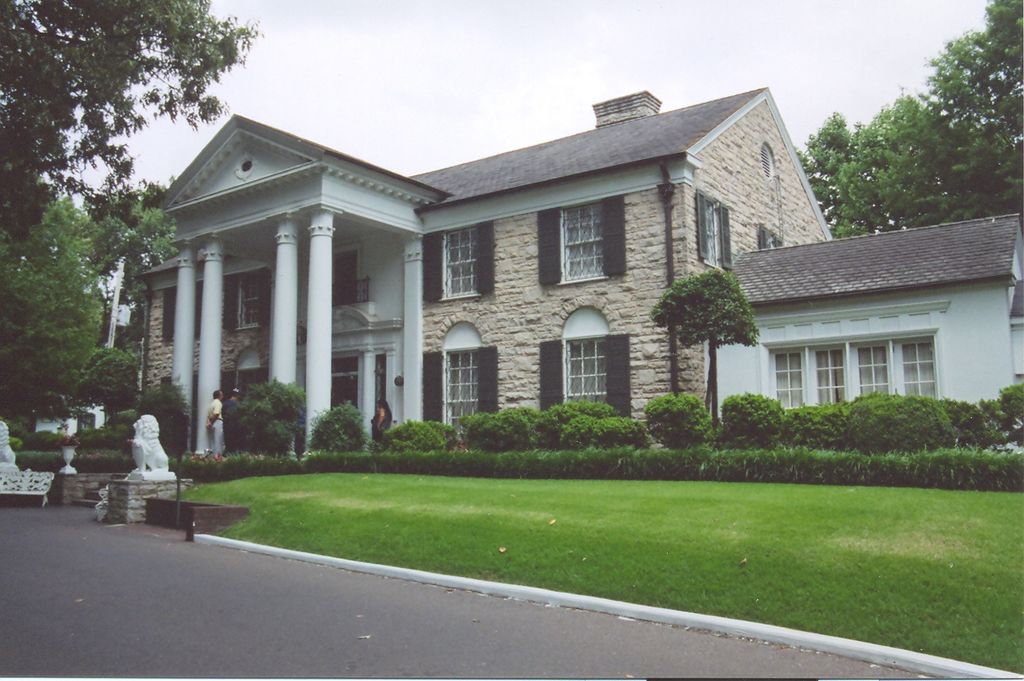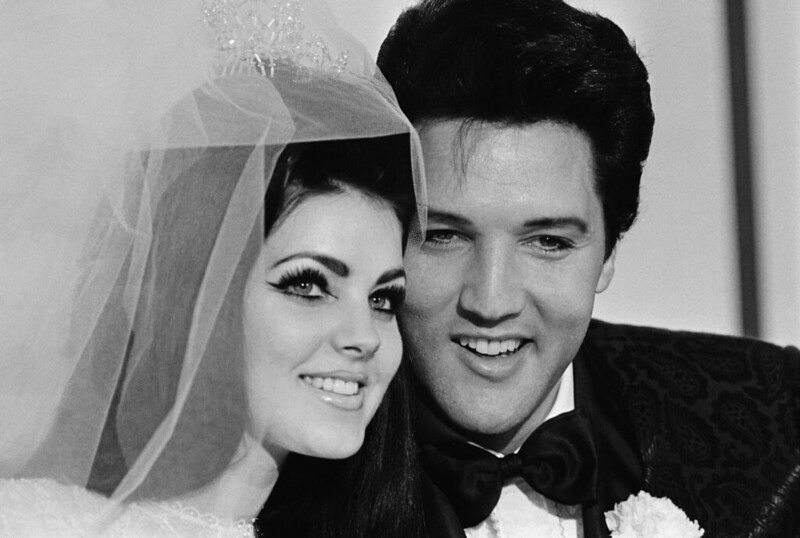
‘Priscilla’ and the Grandeur and Terror of Graceland
The new Sofia Coppola film Priscilla explores the tumultuous life of rock star Elvis Presley’s (played by Jacob Elordi) wife Priscilla Presley (played by Cailee Spaeny). It details the lonely, isolating, often abusive existence she endured during her courtship, marriage, and stay in Graceland.
The movie exists as a counterpoint to the mythologized look of the King’s life pushed by films like 2022’s Elvis. It shows the harmful effect that his fame and lifestyle had on the people around him.
With that in mind, we’ll be talking about the myth vis-a-vis how Graceland represented him. Then we’ll analyze the techniques used in Coppola’s film to portray the isolated life that Priscilla Presley found herself leading.
Graceland: The Myth, The Legend
Whether Elvis Presley’s honorific of The King is deserved, his name still holds a mystique that none can equal. And one of the biggest monuments of his greatness is Graceland, a massive 5-hectare estate in Memphis, Tennessee.
The mansion in the center of it is an old-fashioned American Colonial house. It’s even complete with giant Corinthian pillars in the front supporting a large triangular pediment. It feels gigantic, and the private estate further adds to the man’s legend.
When Elvis died in 1977 in the toilet of Graceland, the estate fell into disrepair due to mounting costs. When Priscilla Presley gained ownership of the place in 1979, she turned it into a public tourist attraction.

Graceland has since become a pilgrimage site for rock and Elvis fans. After he died, it was merely an aging rock star’s mansion. Its turnaround to a historic site and tourist attraction is largely due to Priscilla Presley’s efforts after Elvis’ passing. Her life and legacy has been intrinsically linked to Graceland throughout her life.
So, a film about Priscilla Presley’s life is bound to be interesting. Despite her wealth and privilege, she was thrust into this life after becoming Elvis’s romantic partner. There’s a lot of quiet drama to be found in that, and director Sofia Coppola explores it through how she presents Priscilla’s gilded cage.
Priscilla was pulled into Elvis’s world when she was 14 years old. She grew up with Elvis and his music, and saw him as a larger-than-life celebrity. That didn’t escape his knowledge, and you can see him use her fondness as a way to pull her closer.
Priscilla Presley’s Gilded Cage
Once Priscilla Presley was pushed into the orbit with Elvis’s managers and friends, the film shows her as being imprisoned with the expectations and desires of having to be Elvis Presley’s girlfriend. She is forced to change how she presents herself: her hair, her makeup, everything. Her connection with Elvis makes it hard for her to finish high school—because, as the movie reminds you, she was a sophomore at high school when the 24-year-old Elvis got together with her.
The film portrays her and Elvis’s relationship as abusive at times. Elvis throws a chairs at her in one scene, and physically assaults her at different points of the film. He tells her after threatening her that she needs a protector, that she needs him. Coppola really uses the large height difference of Elordi and Spaeny to bring home the power imbalance of the relationship.

Coppola also uses Graceland’s majesty to emphasize Priscilla’s “smallness” compared to the life that she finds herself in. She’s too small for their king-sized bed. Elvis angrily commands during one scene for her to return a dress because it’s too big for her figure.
Coppola utilizes her signature soft focus, nostalgic style to really situate you in the fantasy of being Elvis’s paramour, then slowly dismantles the illusion with the heavy loneliness that Priscilla finds herself in this house.
The Loneliness of Opulence
Coppola uses the giant, sprawling Graceland mansion as a way of showing her isolation from Elvis and from the world. The offices are always filled with smoke, filled with the men who control her husband and her life.
Despite the rooms’ walls being emerald green or white, the curtains are seemingly always drawn when Elvis is in the room. He and his men cast shadows that make Elvis and his handlers look even more imposing. The offices have an oppressive masculine air reminiscent of The Godfather, and it shows the control that they have with Priscilla.
One sequence has her walking around Graceland after Elvis goes to shoot a movie. Priscilla walks around the pretty decor and fancy furniture, face empty in loneliness. The giant white couches overwhelm her when she sits on them. In a wide view of the living room, her diminutive size is contrasted to the giant empty room. It’s filled with luxuries like a grand piano and chandeliers, and yet empty with any life.
There’s another scene where we see Priscilla looking through some of the giant windows of the mansion. Typically movies use this shot to show a character’s power or control. Instead, it looks like a glass prison. She is forced to spend all her time at home, partially alone, and Graceland looms large in her isolation.
There’s no jet-setting lifestyle for Priscilla; she’s stuck in Memphis, a doll in his collection alongside the giant mansion.
Sofia Coppola’s Stories of Isolation
It makes her divorce and escape from Elvis in the end both hollow and triumphant. It was her home for the majority of her life. She lost her youth there, but the act of leaving this home gives freedom and independence to take the reins of her own destiny and life, to chart her own legacy—and eventually, Elvis and his legacy, too.

Coppola has always been the spokesperson for the loneliness of privilege. From her use of Versailles to humanize the difficulties of Marie Antoinette, to portraying the solitude of living in different hotels, her specialty is contrasting the opulence of her subjects’ lives with the despair that exists within these systems.
She uses Graceland in a similar way. For all intents and purposes, this mansion is nouveau riche in its design, and yet it functions as a prison for our protagonist. Her freedom in the end is by leaving its white gates. It’s something that Coppola does harp on from Lost in Translation onwards: the freedom to choose your destiny is better than any gilded prison.
With Priscilla, she takes the queen of rock and roll’s King and shows the darkness in the limelight. Coppola shows the exploitative and abusive structure of the world against young women. It’s one that permeates through the systems and traps them without any choice or freedom.
Related reading: Thematic Architecture in ‘The Boy and the Heron’


